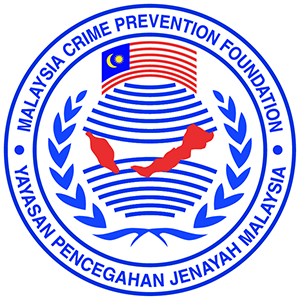
Sexual abuse against children are often perpetrated by those close to them, making it essential for parents to be aware of the risk factors within trusted circles.
The surge in sexual offences against children by individuals known to them, as highlighted in the local media on May 26, 2025, calls for an analysis that explores structural, situational and technological factors that contribute to the vulnerability of children.
The troubling pattern of such attacks by family members and acquaintances presents several critical implications for both crime prevention and policy development.
The fact that 7,982 cases recorded from 2023 to April 2025 involved perpetrators known to the victims shows that sexual violence against children often occur within trusted social networks.
This shows that deviant behaviour is often cultivated and then enacted in intimate social contexts.
Offenders may exploit the child’s trust and emotional dependency, making detection and reporting more complex.
The familial or social proximity not only facilitates access to but also imposes psychological barriers on victims, deterring disclosure.
A significant insight from reports in the local media is the evolving modus operandi of offenders from exploiting digital platforms to manipulate victims to cyber victimisation, where technology serves as both a medium and facilitator to sexual crimes.
By voluntarily sharing explicit content, often without understanding the risks fully, children become susceptible to blackmail and further abuse.
The concept of “digital grooming” becomes pertinent here, illustrating how offenders create a deceptive sense of intimacy to manipulate children into compromising positions.
The anonymity and reach of social media often blur geographical boundaries, thus reducing the need for physical proximity. Yet, in these cases, digital abuse continues to be perpetrated by familiar individuals, suggesting an alarming convergence of offline and online threats.
The perfect storm
Crime occurs when three elements converge: a motivated offender, a suitable target, and the absence of capable guardianship.
When children’s use of digital platforms goes unsupervised or is not adequately monitored, it raises their exposure to motivated offenders.
This is especially so in households or communities where digital literacy among guardians is low.
The reliance on technological communication has inadvertently made it easier for offenders to watch their targets and approach and manipulate them without detection.
Children who engage in risky online behaviour may not fully understand the implications of their actions, especially if such behaviour becomes normal within peer groups.
Offenders also exploit chidren’s naivety, capitalising on their need for validation, which often outweighs risk assessment.
The voluntary sharing of explicit content shows that there is a need for stronger focus on digital ethics, consent, and permanence of online action.
The way forward
These findings underscore an urgent need for crime prevention strategies that combine legal enforcement, community education, and technological safeguards.
Legislation must evolve to address new forms of digital exploitation, while guardians and educators must be equipped to recognise early signs of victimisation. Public policy should prioritise the following strategies.
Firstly, there must be comprehensive digital safety curricula at school.
Countries like Estonia and Finland have pioneered digital literacy education by integrating online safety, privacy awareness, and digital ethics into early schooling.
In Finland, the “Media Literacy School” initiative teaches students as young as seven to identify online risks, understand digital footprints, and navigate the internet responsibly.
This preventive approach empowers children with the knowledge to recognise grooming behaviours and understand the consequences of sharing personal content.
Secondly, there is a need for community-based awareness campaigns about intra-familial sexual abuse.
In Canada, the “Commit to Kids” programme, developed by the Canadian Centre for Child Protection, provides child-serving organisations with step-by-step guidance on how to reduce the risk of sexual abuse.
The programme includes materials for parents, caregivers, and children to recognise warning signs within familiar settings and encourages open discussions about consent and boundaries.
Similarly, Australia’s “Safe4Kids” initiative delivers workshops to schools and community groups, focusing on body autonomy, respectful relationships, and recognising grooming, even within trusted networks.
Thirdly, training programmes for parents to monitor and guide children’s online behaviour are essential.
The UK’s “Parent Zone” project, in collaboration with the National Crime Agency’s CEOP (Child Exploitation and Online Protection Command), offers online resources and interactive sessions for parents to better understand the digital environments their children inhabit.
This includes practical tools on configuring privacy settings, recognising predatory behaviour, and fostering open communication with children about their online experiences.
Additionally, Norway’s interdisciplinary Barnehus (Children’s House) model, which integrates police, child welfare services, medical experts, and psychologists in a single location, exemplifies a trauma-informed, child-centric response to sexual abuse disclosures.
By reducing the number of interviews and relocations, the model minimises a repeat of traumatic experiences while facilitating faster, more coordinated interventions.
Technology-driven interventions have also proven effective.
In the Netherlands, AI tools are employed to detect grooming language on children’s messaging apps, alerting moderators and guardians in real-time.
Meanwhile, in Germany, the “Kein Täter werden” (Don’t Offend) programme offers anonymous therapeutic support to individuals at risk of offending, thus focusing on proactive deterrence.
In summary, the reported data represents more than a legal issue; it is a socio-criminological challenge rooted in evolving social interactions, technological accessibility, and the failure of traditional guardianship in the digital age.
A holistic criminological response must not only address the symptom of abuse but also its deeper causes: the erosion of trust, misuse of technology, and systemic gaps in child protection mechanisms.
By learning from innovative strategies in civil democratic societies, Malaysia Madani can build an ecosystem of proactive prevention, responsive intervention, and sustained education to curb the rising tide of child sexual exploitation perpetrated by those closest to the victims.
This article first appeared on FMT.
Past Events
- MCPF Penang Chairman Dato’ Seri Ong Poh Eng chairs a small group discussion on CCTV Pilot Project plans for selected Pilot Boarding School (SMK Mengkuang, SPT) at PGC
- MCPF Penang SLC and DLCs attend Town Hall Discussion on Bullying at Dewan Sri Pinang
- MCPF Penang attends Digital Shielding Program for USM Students at Dewan Pembangunan Siswa, USM
- MCPF Penang attends Closing Ceremony of Global Explorers International Co-curriculum Camp 2025 at Pusat Kokorikulum, Bukit Mertajam
- MCPF Penang attends On-Site Review of proposed Pilot CCTV Project at SMK Mengkuang, SPT






